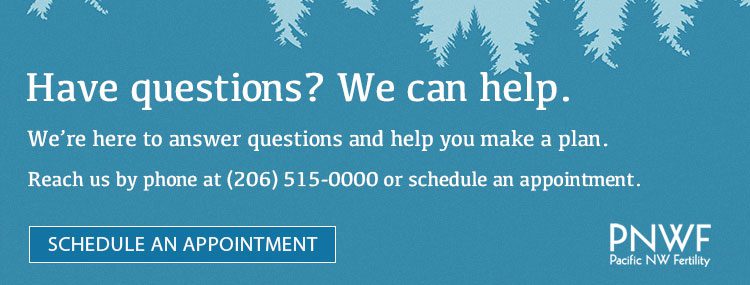How age affects the chances of success with in vitro fertilization
Looking at in vitro fertilization (IVF) success rates by age clearly shows how much of a role age plays in fertility and pregnancy. In fact, the age of the egg provider at the time of retrieval is the single most important determinant in IVF success. Nonetheless, IVF is a complex process that involves many separate factors that can all affect success. These include medical conditions such as fibroids or endometriosis, male factor infertility, ovarian reserve, and clinical experience and expertise. In this article, we will explore the most current data on IVF success rates by age.
How Are IVF Success Rates Calculated?
The following data comes from the Society for Assisted Reproductive Technology (SART). This professional medical organization collects data each year from fertility clinics across the country and compiles them into a report. This report breaks the data down into several different categories and measures of success.
It’s important to note that SART gathers this data directly from fertility clinics, each of which have different criteria for treatment policies, patient selection, and other factors. For this reason, the average success rates do not indicate a definitive chance for success for any one individual patient. Instead, they can serve as a useful starting point to launch a conversation with your fertility specialist to provide some context for your specific situation and chances of success.
National IVF Success Rates by Age
The most recent complete set of data from SART comes from 2021. The average success rates for that year were as follows:
| Age of IVF patient | < 35 | 35 – 37 | 38 – 40 | 41 – 42 | > 42 |
| Live singleton births per egg retrieval | 42.0% | 30.8% | 19.2% | 9.2% | 2.8% |
| Live singleton births for first embryo transfer | 35.0% | 26.3% | 17.1% | 8.6% | 2.6% |
| Live singleton births per new patient | 49.8% | 40.1% | 27.1% | 13.3% | 4.3% |
This data clearly shows that as the age of the IVF patient increases, average chances of success decrease significantly. Let’s explore why this happens.
Why Does Age Matter So Much for IVF Success Rates?
Age affects the chances of conceiving, whether naturally or through assisted reproductive technology, for two main reasons: egg quantity and egg quality.
People with uteruses are born with all the eggs they’ll ever have – approximately 1 million at birth. As a person ages, their eggs (technically called “oocytes”) either die off, are released through ovulation, or are absorbed back into their body. By puberty, most people with uteruses have around 300,000 eggs left. The quantity of available eggs decreases over time, declining rapidly after around age 37. Fewer eggs typically means it’s harder to get pregnant.

Just as egg quantity decreases with age, so does egg quality. Each egg contains instructions for how to grow into an embryo and, eventually, a person. As eggs age, they make more errors, which increases the chance of developing into an abnormal or unviable embryo. Egg quality starts to decline around age 35 and then, like quantity, rapidly decreases in the late 30s.
The decrease in egg quantity and quality means that eggs retrieved from older patients have a lower chance of becoming fertilized, implanting into the uterus, or developing into a healthy pregnancy. These decreased chances apply both for natural pregnancy and for in vitro fertilization.
What About Rates For Donor Egg IVF?
Importantly, the relationship between age and egg quality/quantity relates to the age of the person when the eggs are retrieved, not necessarily the age of the person receiving the eggs. This principle underlies both fertility preservation and egg donation. Egg donors are typically under 29 years old. Because of this, the chances of donor egg IVF success tend to stay fairly consistent, regardless of the recipient’s age. For this reason, SART tracks donor eggs IVF success rates for fresh and frozen donor eggs without breaking it down by age groups. The most recent SART report states the following success rates:
- Live singleton births from fresh donor eggs: 38.3%
- Live singleton births from frozen donor eggs: 36.9%
What Does This Mean for Me?
As noted, it’s not really possible to use national IVF data as a one-size-fits-all match for an individual’s chances of pregnancy through IVF. Each patient is unique, and each clinic may have different therapeutic approaches. However, the data does underline the importance of timing when it comes to fertility and considering treatment options. For all these reasons, it’s important to discuss your specific fertility history and goals with a specialist. They can help you apply complex fertility data to your personal history and give you an honest assessment.
At PNWF, we want you to have a grounded foundation as you consider IVF or other fertility treatments. IVF doesn’t guarantee a baby, but there are lots of options to help decide if it’s a possible path for you. To get started on your fertility journey, make an appointment today.


